Squint and Pediatric Ophthalmology
Pediatric Ophthalmology
The best way to make children good is to make them happy
When a child happy , the whole family become happy
It is very necessary to provide children with specialized care and attention and also important for every child to receive a thorough eye examination before they begin school. This is because certain conditions, such as Refractive Error and Amblyopia, may go undetected if not examined at an early age. Children under the age of 5 are particularly vulnerable to these issues as they may not be able to communicate any vision problems. Therefore, it is recommended to have periodic eye examinations for individuals in this age group. Early screening is particularly important for children who have a family history of eye conditions.
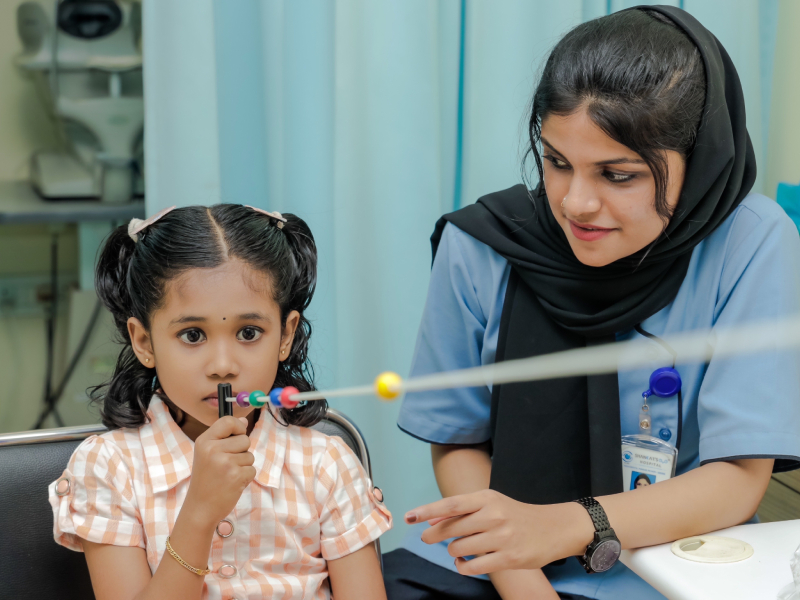
Pediatric Eye Problems
Congenital Cataract
A congenital cataract is when the lens of the eye is cloudy at birth. The main causes include maternal infections like rubella during pregnancy. Congenital cataracts can happen in one or both eyes and should be treated by removing the cataract at the earliest.
Congenital Glaucoma
Congenital Glaucoma affects infants and children. It causes damage to the optic nerve, leading to cloudy vision, light sensitivity, and vision loss due to pressure build-up inside the eye.
Pediatric Retina
Eye exams for children are essential to ensure eye health and detect vision problems early. Retinopathy of Prematurity (ROP) is a condition in premature babies that can affect their vision. Early screening for ROP is important for babies weighing less than 2 kg or born before 31 weeks.
Pediatric Strabismus
Strabismus is a common cause of defective vision in children. If left untreated, it can lead to vision loss. Periodic eye checkups for children below 5 years are recommended. Early detection and treatment are necessary.
What Are the Risk Factors for Squint Eye?
- Stroke, Down syndrome, or cerebral palsy
- High refractive error
- Family history of squint eye
- Poor vision in one eye
- Hydrocephalus
- Brain tumors, head injuries, neurological problems, or Graves’ disease
How is a Squint Eye Treated?
Shankar’s Eye Hospital offers the best treatment options for squint eye, depending on the type, severity, and cause. Treatments include:
- Correction of Refractive Error: Wearing glasses or contact lenses to improve vision and reduce eye strain.
- Surgery: Strabismus correction by operating on the extraocular muscles to adjust their position and tension, improving cosmetic appearance and binocular vision.
Lazy Eye / Amblyopia
Lazy eye (amblyopia) is reduced vision in one or both eyes due to abnormal visual development. The World Health Organization (WHO) recommends early screening and intervention to prevent amblyopia.
Diagnostic Instruments
- RAF Ruler
- Welch Allen Spot Pediatric Arm
- Synoptophore
- Loose / Bar Prisms
- Lea Symbols Chart
- HOTV Distance Chart
- Vergence Facility Prism
- Brock String
- Accommodative Flippers
- Stereo Fly Test
- WORTH 4 DOT Test
Early Detection
Early detection is critical for conditions that lead to amblyopia. Screening for visual acuity issues, refractive errors, and alignment problems can prevent long-term vision loss.
Treatment Approaches
Treatment may include corrective glasses, occlusion therapy (patching the stronger eye), or atropine drops to blur the stronger eye and stimulate the weaker one.
Importance of Compliance
The success of treatment largely depends on the child’s compliance with wearing eye patches or using atropine drops as prescribed.
Age Factor
Treatment is most effective before the age of 7 years.
Common Symptoms of Lazy Eye
- Vision Problems
- Eye Alignment Issues
- Eye Coordination Challenges
- Depth Perception Difficulties
- Peripheral Vision Differences
Symptoms of Amblyopia in Kids
- Squint
- Headaches or fatigue
- Squeezing one eye in bright light
- Poor depth perception
- Not able to see far objects clearly
- Eye turning in, out, or up
Treatment Options
- Corrective Glasses: To address refractive errors.
- Eye Patches: Covering the stronger eye using patches or frosted glass.
- Vision Therapy: A program of eye exercises, testing, and occlusion therapy to treat visual problems.
- Surgery: For conditions like cataracts and ptosis.
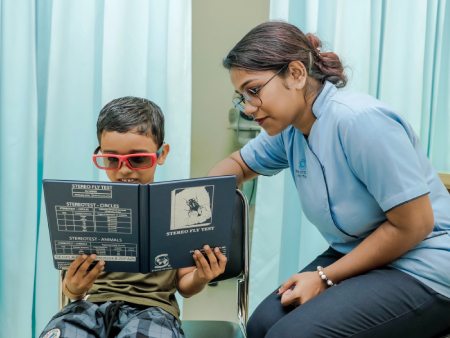
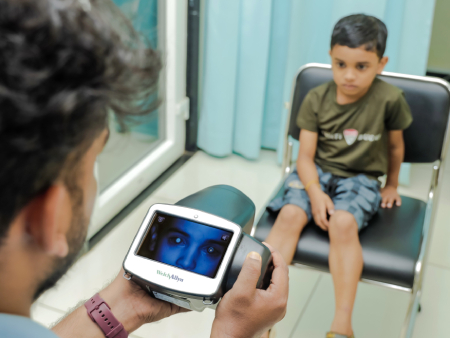
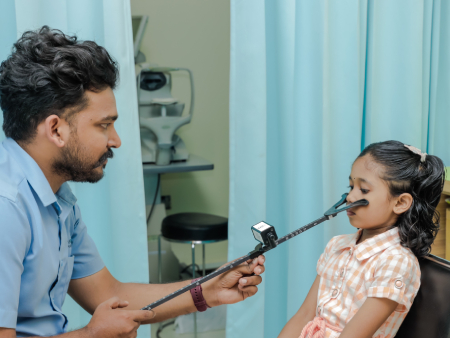
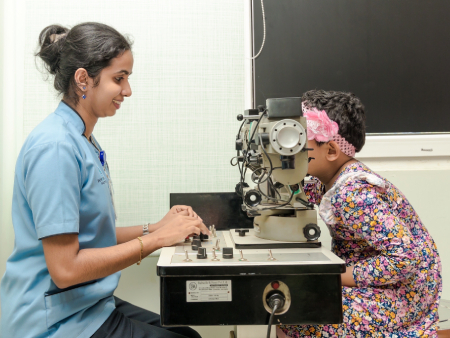
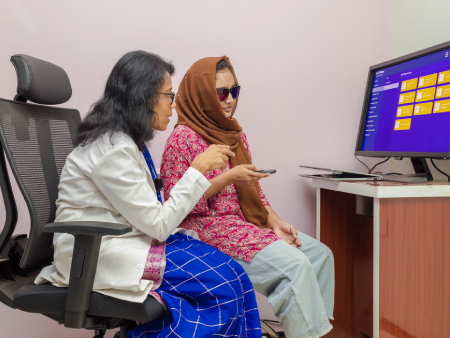
Refractive Error
Refractive errors are common in children and can be risk factors for amblyopia.
Myopia
Myopia (nearsightedness) is a common refractive error. It causes distant objects to appear out of focus and can lead to headaches and eye strain. The main causes include genetics, long eyeball, corneal curvature, and lens shape.
Myopia Control
Myopia control slows excessive eye growth. Shankar’s Eye Hospital offers Myatro eye drops and Neurapy eye exercises to reduce progression and improve vision.
Hypermetropia
Commonly known as farsightedness, but individuals may have difficulty seeing both distant and near objects. Ciliary muscle weakness, short eyeball, less lens power, and corneal shape differences are common causes.
Vision Therapy
Vision therapy stimulates the optic nerve to improve vision in cases of lazy eye. It’s particularly beneficial for children with binocular vision problems.
Shankar’s Eye Hospital offers a specialized vision therapy exercise, NEURAPY, to improve amblyopia or lazy eye in the Kollam district.
Eye Allergies
Eye allergies are common in children. Symptoms like itchy, watery, red eyes can be caused by allergens, environmental irritants, or infections like conjunctivitis.